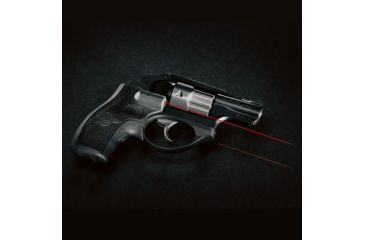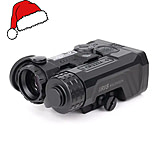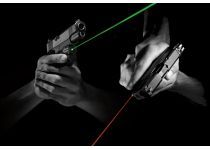
![]()
Laser sights have grown in popularity in recent years because their ever-improving technology has led to smaller, lighter, and more powerful lasers with enhanced features for greater functionality. The increase in your accuracy and target acquisition speed will help you make those vital shots. During self-defense scenarios, even the most experienced shooter will have a decrease in their shooting effectiveness. While a laser sight is no substitute for practice and experience with firearms, it will help you stay on target even in the most dire situations. That confidence will help you sleep a little easier at night, and the visual of a gun with a laser sight is a great deterrent against attackers.
So you've decided you want to buy a laser sight. With all the options on the market today, it can be a struggle to find the exact model for your needs. You'll need to ask yourself a few questions as you begin your search:
- What firearm are you using? Manufacturer? Model? Caliber? How long is the barrel? How are you going to mount your laser sight?
- What color laser do you need? Will you be shooting in the day or night?
- Do you also plan to mount a weapon light?
- Will you be using night vision?
- Will you be using a holster?
It's important to have a clear answer to each of these questions before you shop for a laser sight, or else you might pick one that doesn't meet your needs.
Types of Laser Sight Mounting Systems
The first thing you need to consider is the firearm you're using and how you'll attach your laser sight. If you choose a laser sight that needs 2 inches of rail space, and you only have 1 inch free, you'll be out of luck. Fortunately, there are a number of different mounting options available today.
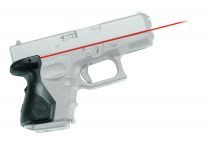
A laser grip attaches to the grip of the gun and are specially designed for each style of firearm. You can find a number of great designs for most major handguns from Crimson Trace. From Glocks and 1911-style pistols to Walther PPs and Berettas, you'll likely find a laser grip for your handgun. Most of these laser sights have an activation switch on the back of the grip or the side near your thumb. When you draw your pistol from a holster, the laser automatically activates from the pressure of your hand. This is incredibly convenient and can save time when it's needed most. A laser grip will affect your holster fit, as the retention straps may not fit standard holsters. Fortunately, Galco has a wide selection of holsters that were specially designed to be used with Crimson Trace Laser Grips. You can find these amazing holsters right here at OpticsPlanet. If you have any questions about which model is right for your new laser, contact us, and we'll help you find the perfect fit.
Another thing to note about laser grips is that they will change the size of your grip slightly, so you may need some practice to get used to the new feel of your pistol.

Rear sight lasers replace or fit on the rear sights on your handgun and are generally very lightweight and easy to use. Unlike a laser grip, they rarely affect your holster fit and are easy to attach to your gun with little-to-no additional parts or replacement of existing parts necessary. Because of their smaller size, rear laser sights tend to be less powerful, but there are some great options available from LaserLyte that can be mounted in no time and are great for improving accuracy without adding much weight or bulk to your pistol.
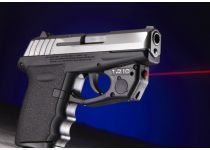
Trigger guard mounted laser sights have grown in popularity because of their versatility. While not all of these sights are universal, many can be used on a wide variety of firearms. The greater room available for these laser sights allows them to be a little larger, and the greater size provides a more powerful laser. There are two things to keep in mind with trigger guard lasers: they will change the shape of your gun, most likely requiring a new holster, and because of the way they mount, they rarely retain accuracy after even just a few shots.
If you want to use the same holster, an internal guide rod laser is a great choice. These lasers actually replace the internal guide rod, so they don't change the size of your handgun. However, they do have their drawbacks. Installation, while not incredibly difficult, is more complex than some other laser sights, and you cannot adjust an internal guide rod laser. The design almost always provides for accuracy within two inches at twenty yards, but if you settle for no less than perfect accuracy, keep in mind that you cannot adjust these sights for windage or elevation.
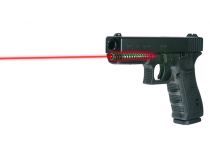
The most common laser sights mount to a rail. You can find great laser sights that mount on Weaver or Picatinny bases. You need to make sure you have enough rail space for the sight, but there are options available today that are designed to fit on sub-compact pistols. This sight is tiny yet adjustable for windage and elevation and powerful enough for most situations. Rail-mounted lasers are the go-to choice for most rifles because they tend to be more powerful and offer more features than smaller lasers.
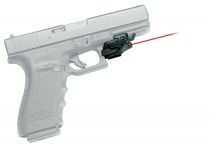
Rifle and shotgun lasers can be a bit larger and heavier to allow for more power and longer battery life, as well as to incorporate other accessories such as weapon lights. A great way to save money, rail space, and weight is to use a laser/light combo. It's a bit heavier than most lasers, but the included flashlight gives you multiple options for enhancing the effectiveness of your rifle. There are also a few laser sight/light combos for pistols that are small enough to fit most compact handguns. The Streamlight TLR series offers several great options for amazing power and versatility. Remember that these laser/light combos will affect the profile of your gun, so you may need a new holster to accomodate.
Should I Get a Red or Green Laser Sight?
Once you know how you'll mount your laser sight, you need to decide what color laser you want to use. Green lasers and red lasers each have their strengths and weaknesses, so consider when and where you'll be shooting, as well as the firearm you're using. Check out our guide on Red vs. Green Laser Sights for a deeper dive.
Red Laser Sights
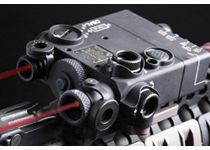
The traditional choice, red laser sights are very durable and cheaper to produce. Since they need to stand up to the recoil from your firearm, the strength of a red laser is often ideal. Red lasers also have a wider operational temperature range than green lasers, so if you're in particularly cold or warm conditions, a red laser will work when a green laser will not. While this range varies from sight to sight, a red laser is generally operational between 15-120 degrees while a green laser is operational between 40-100 degrees. So if you're a police officer in a Northern State in the winter, you'll want to go with a red laser.
Also note that the simpler technology of a red laser sight consumes less power than green, so you'll get a longer battery life.
Pros: Less expensive, stands up better to recoil, better operational temperature range.
Cons: Less visible in the day time, only visible up to 25-30 yards.
Green Laser Sights
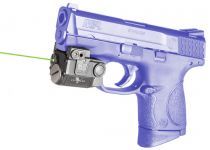
The number one reason to use a green laser sight is daytime visibility. You will have a much easier time seeing a green laser in broad daylight than red. Green is close to the center of the visible light spectrum at about 532 Nanometers. Red is higher on the spectrum at 635 Nanometers. Because of this, a red light will be obscured by other light, whereas a green light will not. While a red laser may only be visible up to 25-30 yards during the day, a green laser can be visible at 100 yards or more. This is huge for target shooters, as target shooting is generally done during the day, and red lasers are often less effective. Green lasers are also extremely useful for laser bore sights, as you generally sight in your new scopes during the day and are trying to see a dot on a white piece of paper at 50 yards. Red lasers may not show up. (for more on laser bore sights see our How-to Guide on Boresighting!)
The drawbacks of a green laser sight are price and durability. A green laser of comparable quality to a red laser will usually cost about double. This is because of the more advanced technology required to make them and how challenging it is to make a green laser that can withstand the shock from heavy recoil. The tech in a green laser is far more delicate than a red laser, so they are not quite as durable. You can certainly find a tough and reliable green laser, but you'll need to pay more for it.
Pros: Effective visible range up to 100 yars and more, great for day time shooting.
Cons: More narrow operational temperature window, more delicate than a red laser, more expensive.
Laser Sight Modes Explained
Some laser sights come with more than one mode. The differences between these will affect your speed of target acquisition.
A laser that pulsates, strobes, or flickers is easier for your eye to see. This is because flickering light is unnatural. Think of emergency flashlights. There is generally a blinking or strobe function because rescue workers are more likely to see you if you have a blinking light because the eye will be drawn to the unnatural image. With a laser sight, this will not only allow you to find the laser dot quicker but also let you see the laser at greater distances on varied backgrounds such as foliage. Pulsating lasers also save a lot of battery life, as those each brief moments when the laser is off is another moment that the battery will last.
A constant-on laser sight will give you a steady dot on target. This is fine for many situations, especially in close quarters such as home defense, but for greater distance, you'll want a pulsating laser.
Some laser sights will come with a quick and easy switch so that you can change from pulsating to constant based on your preference. If you combine the pulsating mode with a green laser, you will be able to see the dot at an incredible distance which is why these are so popular.
Infrared Laser Sights - IR Lasers
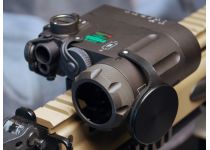
Another option you may come across when selecting a laser sight is IR Lasers. An infrared laser is intended for use with night vision devices. Night vision intensifies light to provide an image, and while they can give you a great view in low light situations, they do require at least some ambient light to work. Starlight or moonlight is generally sufficient enough to give you a great view, but while indoors or in areas of absolute darkness, you will need to supplement the ambient light to see through night vision. Flashlights are a great way to get a better look in the dark, but they give away your position. Infrared light is invisible to the naked eye, but will give your night vision goggles plenty of light to see in the darkest situations.
IR Lasers allow you to see without being seen, but they are restricted for use by law enforcement and military professionals because having an IR laser flashed in your eye can do permanent damage, possibly even partially blinding you. While they are not ideal for home defense, they are an outstanding way to gain a tactical edge over an enemy in combat situations.
